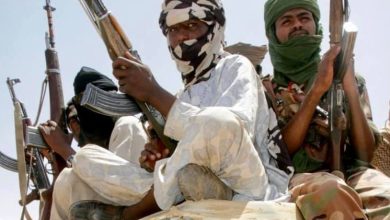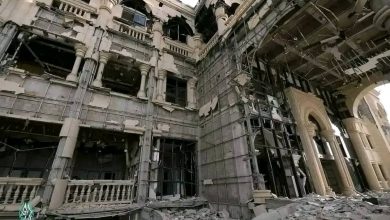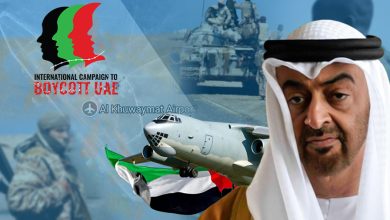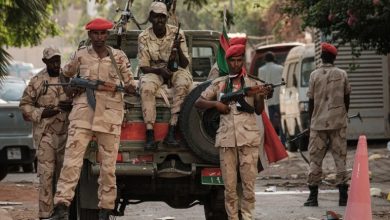The Border Triangle: Gateway to a Lawless Zone and the Struggle of Geography and Proxy
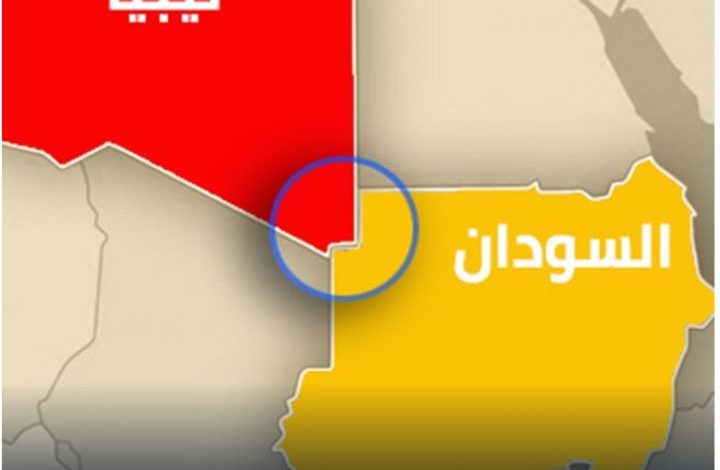
Prepared by: The African Center for Consulting
In the heart of the Sahara Desert, at the fragile junction of three states teetering on the brink of collapse or entrenched in conflict, lies a small patch of land—known as the border triangle between Sudan, Egypt, and Libya. Once merely a peripheral contact zone between three pivotal countries, it has transformed into a blazing geopolitical hotspot. This contested space threatens to redraw the map of influence in North Africa, exposing a struggle in which the ambitions of warlords intersect with the calculations of regional and international powers, and the national security equations of neighboring states.
In early June 2025, the Sudanese Armed Forces announced their withdrawal from the border triangle to reposition elsewhere, leaving the strategic area under the control of the Rapid Support Forces (RSF).
The RSF’s takeover was not a mere tactical maneuver; it marked a foundational moment in the long process of dismantling the Sudanese state, commodifying geography, and turning desert frontiers into supply corridors and platforms for settling regional scores. It became a convergence point for transnational smuggling networks, militia groups backed by states, and intelligence agencies working from behind the scenes.
This move represents a major shift in RSF operations in its war against the Sudanese state, ongoing since April 2023.
The Logic of Land: Geography Without a State
The triangle sits at the meeting point of southeastern Libya, Egypt’s western frontier, and northwestern Sudan. On the surface, it appears barren—devoid of major cities or dense population—but in reality, it is a crucial web of desert routes long used for smuggling people, weapons, fuel, gold, and narcotics.
From Libya’s Kufra to Sudan’s Darfur, from Egypt’s Al-‘Uwaynat to Chad’s Tibesti Mountains, these routes form a tangled network that defies easy policing. Whoever controls a point along this network holds a key to an unofficial gateway for migration to Europe, logistical supply lines for armed groups in Sudan and Libya, and the recycling of smuggling profits through banks and civilian fronts in far-off capitals.
Unsurprisingly, this triangle has recently climbed the agenda of regional and international interventions. Though often overlooked on the map, it is a crossroads for shaping Sudan’s future, asserting military influence in Libya, and safeguarding Egypt’s strategic depth.
RSF and the Border: From Tactics to Strategy
Since the outbreak of war in April 2023 between Sudan’s armed forces and the RSF, the latter has sought to build parallel supply lines beyond army-controlled zones. The capture of the border triangle was not simply a battlefield advance—it was a strategic gamble to secure access to Libya for the flow of weapons and fuel, and to accumulate illicit revenue from gold smuggling and human trafficking.
Failing to seize El-Fasher—the key security hub in Darfur—the militia entrenched itself in this fragile area, hoping to gain more bargaining power and project itself as a force capable of controlling territory beyond the central state.
External backing played a role. Multiple reports point to direct Emirati support, including the establishment of a land supply route from Darfur to Libya’s Jufra via Kufra. Satellite imagery has shown Libya’s Ma’tan as-Sarah airbase being used to transport ammunition and fuel to the RSF.
Haftar and the RSF: An Alliance of Convenience
This cooperation points to a more complex equation. Khalifa Haftar, the strongman of eastern Libya, sees in the RSF an opportunity to bolster his influence in southern Libya, maintaining smuggling channels and gaining a foothold in Sudan’s conflict.
But for Cairo—long a backer of Haftar—this presents a dilemma. The RSF is among the most serious threats to Egypt’s southern security. Reports of Al-‘Uwaynat–Kufra being used as an active smuggling route have raised concerns in Cairo that it could one day be turned against Egyptian interests.
Washington and Europe: Drawing the Lines from Afar
In this tangled setting, Western involvement cannot be ignored. U.S. officials have recently signaled plans to re-engage in Sudan’s file, seeing control of the triangle as a key lever in re-engineering influence in Africa—especially after brokering an agreement between Rwanda and the DRC.
Brussels, too, views with alarm the presence of a non-state militia on a vital irregular migration route from the Horn of Africa to the Mediterranean. For years, Europe has funded “migration containment at source” policies, supporting Sudan and Libya financially and through intelligence cooperation. Yet, in practice, this created fertile ground for parallel security entities to run these operations for their own gain.
The EU’s support has a long-standing connection to the RSF: while officially funding Sudan’s anti-smuggling efforts under the Khartoum Process, it turned a blind eye to evidence that these funds benefited the RSF. This is part of the militia’s motivation to control the triangle—a key chokepoint for trafficking and migration, an issue central to EU policy in the region.
Gold and Fuel Wars: Economics Driving Geography
Behind the military and geopolitical contest lies a silent war over resources. The triangle’s routes pass over vast gold reserves stretching from northern Darfur to Mauritania, intersect cocaine routes from South America to Europe, and connect networks trading subsidized fuel and narcotics.
The RSF has exploited this geography to bolster its finances, smuggling gold via Kufra to Tripoli and onward to Dubai, with the tacit cooperation of elements in Haftar’s security apparatus. Local militias such as Subul al-Salam in Kufra have acted as operational partners, securing lifelines for the RSF amid Sudanese army advances in the west.
Cairo: Between Deterrence and Neighborly Realities
For Egypt, southern border stability is impossible as long as a foreign-backed militia controls key crossings near sensitive installations in the Al-‘Uwaynat triangle. In July, Sudan’s General Abdel Fattah al-Burhan visited Cairo at the same time as a Haftar-led delegation arrived to discuss developments after the RSF seized the area. Sudan accused Libyan forces of supporting the RSF move.
Cairo’s recent diplomatic moves toward Burhan, while maintaining channels with Haftar, reflect an attempt to recalibrate the balance. Egypt will not risk losing Haftar, but nor will it tolerate an insecure southern frontier.
Possible Futures: Three Overlapping Scenarios
1. Status Quo: The RSF retains control, using the triangle as a rear base for financing and supply. This could solidify an undeclared alliance between the UAE, Haftar, and the RSF, further straining ties between Khartoum, Benghazi, and Cairo.
2. Egyptian Pushback: Either direct action or through intermediaries, pressuring Haftar or backing Sudan’s army to reclaim the triangle. This risks sparking open confrontation and bringing Egypt-UAE tensions into the open.
3. International Mediation: A negotiated arrangement under African Union or UN oversight, dismantling the RSF’s monopoly and installing a joint border monitoring system. This remains unlikely for now due to deep mistrust.
External Backing or a Project of Fragmentation?
The key question remains: Is the triangle’s turmoil part of a deliberate plan to fragment Sudan, or just the spillover of an uncontrollable civil war?
Some analysts argue that Emirati support for the RSF aims not only to back a battlefield ally but also to cement long-term influence over a strategically vital energy and trade corridor. Western powers, too, may see value in having a “non-state” actor to engage with outside the framework of traditional armies—a shift in power projection strategies.
Structural Resistance: The Army, the State, and Society
Yet, this project faces formidable domestic resistance. Despite heavy blows, Sudan’s armed forces retain legitimacy in defending the nation’s borders. With major cities and much of the central region back under army control, RSF advances in peripheral areas lack genuine demographic depth.
The militia has also lost popular support due to atrocities committed during the war. A broad swath of Sudanese society rejects legitimizing the RSF, viewing it as a rebellion against the state and a tool of foreign interference.
Conclusion: The Triangle as a Test Case for Statehood’s Future
Ultimately, the battle over the border triangle is a turning point not just in Sudan’s war but in the region’s geopolitical trajectory. This harsh stretch of desert has become a mirror reflecting regional power plays, foreign interventions, and the line between state authority and militia rule.
It is more than a border contact point—it is an open laboratory for redefining sovereignty, identifying legitimate actors, and deciding who holds the keys to geography.
While global powers’ interests collide in this small corner, the decisive factor will be whether Sudanese—army, civil society, and emerging political forces—can rebuild the state, free the land from illicit arms, and reclaim their borders from proxies.
